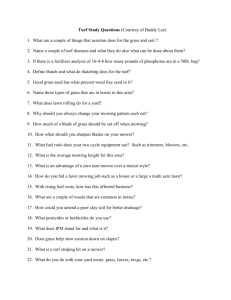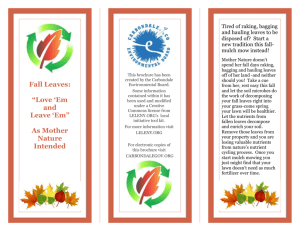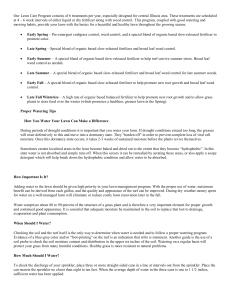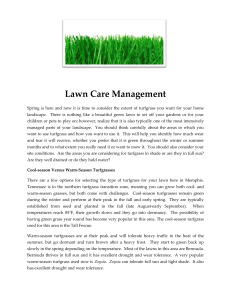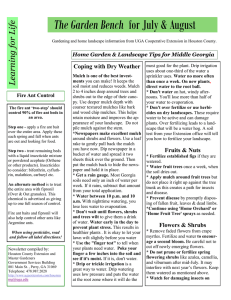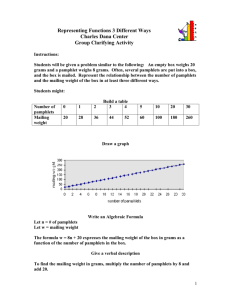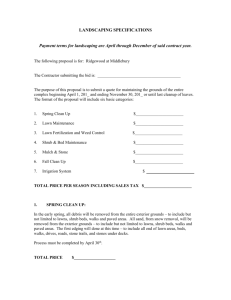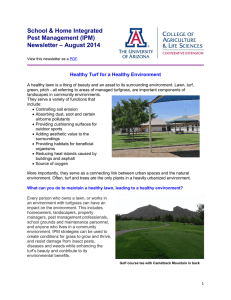Management Plan TEMPLATE
advertisement
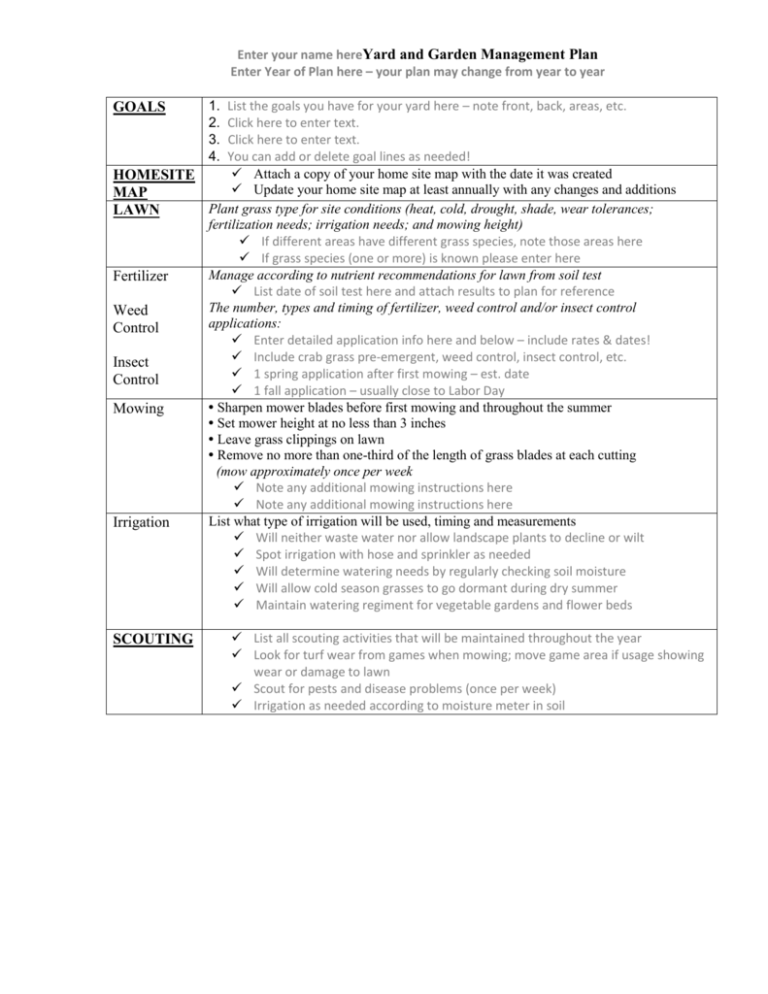
Enter your name hereYard and Garden Management Plan Enter Year of Plan here – your plan may change from year to year List the goals you have for your yard here – note front, back, areas, etc. Click here to enter text. Click here to enter text. You can add or delete goal lines as needed! Attach a copy of your home site map with the date it was created HOMESITE Update your home site map at least annually with any changes and additions MAP Plant grass type for site conditions (heat, cold, drought, shade, wear tolerances; LAWN fertilization needs; irrigation needs; and mowing height) If different areas have different grass species, note those areas here If grass species (one or more) is known please enter here Manage according to nutrient recommendations for lawn from soil test Fertilizer List date of soil test here and attach results to plan for reference The number, types and timing of fertilizer, weed control and/or insect control Weed applications: Control Enter detailed application info here and below – include rates & dates! Include crab grass pre-emergent, weed control, insect control, etc. Insect 1 spring application after first mowing – est. date Control 1 fall application – usually close to Labor Day • Sharpen mower blades before first mowing and throughout the summer Mowing • Set mower height at no less than 3 inches • Leave grass clippings on lawn • Remove no more than one-third of the length of grass blades at each cutting (mow approximately once per week Note any additional mowing instructions here Note any additional mowing instructions here List what type of irrigation will be used, timing and measurements Irrigation Will neither waste water nor allow landscape plants to decline or wilt Spot irrigation with hose and sprinkler as needed Will determine watering needs by regularly checking soil moisture Will allow cold season grasses to go dormant during dry summer Maintain watering regiment for vegetable gardens and flower beds GOALS SCOUTING 1. 2. 3. 4. List all scouting activities that will be maintained throughout the year Look for turf wear from games when mowing; move game area if usage showing wear or damage to lawn Scout for pests and disease problems (once per week) Irrigation as needed according to moisture meter in soil GARDENS • Test soil (every 3 years) Your lawn needs its own soil test, but vegetable gardens, perennial beds, annual beds, etc. may need separate soil tests as their nutrient needs are all different – list the different garden areas of your yard here and the year soil tested. You may have several or none other than your lawn! • Fertilize according to nutrient recommendations: Enter nutrient recommendations for vegetables here Enter nutrient recommendations for perennial flowers or shrubs here Enter nutrient recommendations for annual flowers here • Add compost when working up beds before planting What type and source of compost you will be using List which beds you will add compost to this year • Select native and pest/disease-resistant, low-maintenance, adapted, hardy perennial plants – include plants that provide year-round visual enjoyment as well as plants that provide bird habitat and food. Inspect plants for pests/diseases prior to planting. You may or may not add new plants to your landscape each year It is a great idea to maintain a list of what plants you added and when It is also a great idea to keep a record of how well these new plants did – maybe the soil was too wet or too dry or they did not receive enough sun? • Select and site plants so that pruning is not an annual need or is minimized May or may not apply, but a pruning schedule is helpful for each plant that will need to be pruned; lilacs after flowering, etc. • Develop Integrated Pest Management or IPM Plan Scouting is a part of a good IPM plan – learn how to create an IPM plan in the upcoming course Recording keeping – what you used, when and the level of success Timing – not only when you reach the infestation level for treatment, but make record of when the pests show up each year, etc. • Mulch beds to prevent moisture loss and discourage weeds; keep mulch away from stems and trunks of woody plants and add mulch as needed over the years May wish to list type of mulch used and how much each year May wish to list where mulch is to be applied to maintain a schedule • Watering will be done according to a moisture meter in the soil Read soil moisture meter regularly – dependent upon weather conditions may need to do more than once per week
